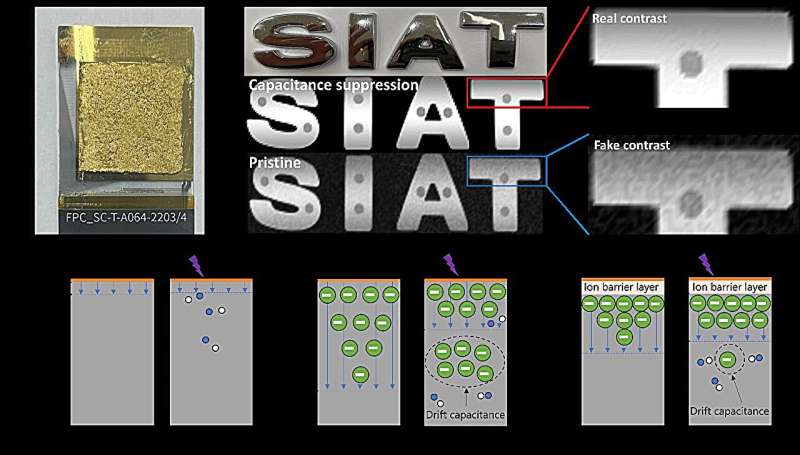This article has been reviewed according to Science X's editorial process and policies. Editors have highlighted the following attributes while ensuring the content's credibility:
fact-checked
peer-reviewed publication
trusted source
proofread
Scientists investigate nonlinear current response in perovskite X-ray detectors

A research team led by Dr. Li Yunlong at the Shenzhen Institute of Advanced Technology (SIAT) of the Chinese Academy of Sciences delved into the origins of nonlinear current response in polycrystalline metal halide perovskite X-ray detectors. Their study was published in ACS Applied Materials & Interfaces on July 14.
Metal halide perovskites hold great promise for X-ray detection applications due to their high atomic number, high carrier mobility, and carrier lifetime. Numerous studies on perovskite X-ray detectors have shown sensitivities surpassing the Kasap model by multiple orders of magnitude and detection limits nearing environmental background radiation levels.
However, the practical application of perovskite X-ray detectors depends on addressing the nonlinear response mechanism of current signals in these detectors. Such nonlinearity is problematic, leading to issues like 'delay' and 'ghosting' in imaging, which detrimentally impact the spatial and material density resolution of perovskite X-ray detectors.
In this study, the researchers proposed a general design strategy aimed at mitigating nonlinear current responses and enhancing the performance of perovskite X-ray detectors.
Both theoretical analysis and experimental results showed that structural imperfections and fluctuations in the width of interface junctions are pivotal in engendering nonlinear elements and diverting the X-ray-induced photocurrent, significantly impacting the linearity of X-ray photocurrent signals.
By improving structural deficiencies and suppressing interface junction width variations, the researchers developed a 64×64-pixel polycrystalline MAPbI3 X-ray flat panel detector prototype with a highly linear current response, demonstrating high-resolution X-ray imaging with suppressed ghosting contrast.
The detectors exhibited a sensitivity of 2.3×104 μC·Gyair-1·cm-2 at an operating bias field of 0.1 V/μm for 100 kVp hard X-ray irradiation. This showcases top sensitivity for similar X-ray energies among polycrystalline perovskite detectors, at the minimum operational electric field.
"Our work paves the way for the commercialization of high-performance, large-area, low-cost direct X-ray detectors," said Dr. Li.
More information: Ziyao Zhu et al, Mitigation of Parasitic and Drift Capacitance-Induced Nonlinear Current Responses for Stable and Sensitive Perovskite X-ray Detectors, ACS Applied Materials & Interfaces (2024). DOI: 10.1021/acsami.4c08425
Journal information: ACS Applied Materials and Interfaces
Provided by Chinese Academy of Sciences





















